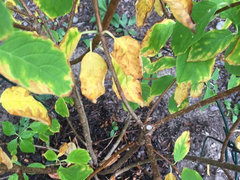Fascination About Hydrangea Leaves Turning Yellow
Fascination About Hydrangea Leaves Turning Yellow
Blog Article
The 5-Minute Rule for Hydrangea Leaves Turning Yellow
Table of ContentsWhat Does Hydrangea Leaves Turning Yellow Do?What Does Hydrangea Leaves Turning Yellow Mean?The Ultimate Guide To Hydrangea Leaves Turning YellowThe Greatest Guide To Hydrangea Leaves Turning Yellow
Hydrangea plants are understood for their stunning blooms, but sometimes their leaves can transform yellow. This is typically a sign that something is wrong and the plant needs your aid.Nonetheless, Hydrangea leaves transforming yellow can be a reason for worry. There are a number of reasons Hydrangea leaves turn yellow, and a lot of them are simple to deal with. Let's look at one of the most typical factors why Hydrangea leaves turn yellow and exactly how to repair them. Hydrangea leaves normally transform yellow when the plant is overwatered.
When the origins of a plant are submerged in water for lengthy periods, they start to suffocate and rot. This process cuts off the roots' oxygen supply, creating the leaves to turn yellow and ultimately pass away. Overwatering can additionally lead to other issues such as fallen leave decline, origin damages, and fungal development.
If you assume your Hydrangea is overwatered, the most effective remedy is to allow the soil dry entirely before watering once more. It's also a good concept to check the drain of your pot or yard bed and make sure that water is not pooling around the plant's roots. Hydrangea plants require well-drained dirt to grow.
9 Simple Techniques For Hydrangea Leaves Turning Yellow
Hydrangea leaves can also transform yellow if the plant is not obtaining adequate water. This takes place when the plant does not get sufficient water, and the soil starts to dry out.

This is understood as "fertilizer shed," It takes place when the plant's roots are revealed to also much fertilizer. Various other indications of plant food shed consist of brown or yellow leaves, wilting, and stunted development.
This will help eliminate any kind of excess fertilizer from the roots of the plant. It's additionally a good idea to reduce the quantity of plant food you are making anchor use of.
Not known Details About Hydrangea Leaves Turning Yellow

If your Hydrangea is plagued with parasites, treating the plant with neem or gardening oil is the ideal option. It's additionally excellent to get rid of any type of damaged fallen leaves from the plant. You can do this by hand or with a pair of trimming shears. It's also a good idea to examine the plant regularly for insects and remove them as quickly as you see them.
To stay clear of spreading the condition, guarantee to decontaminate your scissors prior to reducing any ends. Hydrangea leaves can also turn yellow if the temperature level worries the plant. This usually occurs when the plant is exposed to extreme cool or heat. The leaves of the plant will turn yellow and begin to leave.
If the temperature stresses your Hydrangea, you need to relocate the plant to a place where it will be shielded from the severe chilly or heat. You can additionally try websites to give the plant with some partial color if revealed to route sunshine. You can also attempt adding mulch around the plant base to help manage the temperature level.
Hydrangea Leaves Turning Yellow Things To Know Before You Buy
When the plant's roots are immersed in water for as well long, they begin to rot. One of the most common root rot signs and symptoms is yellowing leaves, as the fungi stops the origins from absorbing nutrients from the soil.
Other indicators find here of root rot include stunted growth, wilting, and fallen leave decline. Inspect the origins of your Hydrangea if it has origin rot. If they are black or brown, then they are probably rotten. If some healthy roots are left, you can try to conserve the plant by replanting it in a new pot with fresh dirt.
Water the plant very carefully, seeing to it not to overwater it. If your Hydrangea is greatly impacted by root rot, starting with a brand-new plant is best. All-natural reasons can likewise create yellow hydrangea leaves. The most common cause is the plant's age. As Hydrangeas age, their leaves will slowly transform yellow and brown prior to falling off the plant.
You can aid the plant by guaranteeing it is getting sufficient water and nutrients. One possibility is that the plant is not getting sufficient water.
Report this page